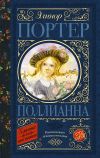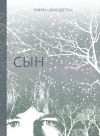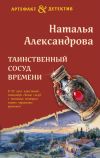Текст книги "Book of Changes («I Ching») with octanalytic commentary"

Автор книги: Henry Vitton
Жанр: Прочая образовательная литература, Наука и Образование
Возрастные ограничения: +16
сообщить о неприемлемом содержимом
Текущая страница: 2 (всего у книги 5 страниц)
9. Brief description of instances properties of the psyche (Fu Xi trigrams)
• 000-Kun, mother – introverted instance 0-Source/Kun (Unified Consciousness) functions in the “horn of plenty” mode based on the principle of impeccability; universe’ love [3];
• 111-Qian, father – extroverted instance 7-Imagination/Qian generates new images, fantasies, dreams; imaginary love [3];
• 110-Dui, third daughter – introverted instance 6-Subconscious/Dui does not have freedom of choice, with the aim of the embodiment of images, the embodiment of a dream, creates or perceives from the outside and stores in itself programs of action; suggestible love [3];
• 101-Li, second daughter – extroverted instance 5-Soul/Li builds relationships according to the scheme “You are higher, I am lower”, shows submission, service, devotion, altruism; sacrificial love [3];
• 100-Zhen, first son – introverted instance 4-Heart / Zhen shows managerial abilities, builds relationships according to the scheme “I and you are on the same level”, equality, building friendly, cordial relations; friendly love [3];
• 011-Xun, first daughter – extroverted instance 3-Irratio/Xun shows creativity, performs spontaneous, unpredictable, irrational actions, shows a childish state, sincerity, carelessness; sexual love [3];
• 010-Kan, second son – introverted instance 2-Ratio/Kan performs rational actions, puts everything in order, puts it in a certain framework, shows care, parental love [3];
• 001-Gen, third son – extroverted instance 1-Mind/Gen builds relationships according to the scheme “I am higher, you are lower”, shows a sense of superiority, selfishness, profit, unscrupulousness, lies, desire for pleasure, reasoning, analytic abilities; egoistic love [3].
10. Determining the number of the hexagram in the Table 1
The Table 1 shows the numbers of 64 hexagrams according to octanalysis (in brackets – according to King Wen). The following are octanalytic interpretations of 64 hexagrams in the sequence of octanalysis.
The sequence of hexagrams according to octanalysis, which we will also call “harmonious sequence of hexagrams”, is formed as follows.
Eight hexagrams #1 – #8 successively describe combinations of a person-situation: 00-, 70-, 60-, 50-, 40-, 30-, 20-, 10-combination. This sequence of hexagrams #1 – #8 corresponds to the harmonious 07654321-hierarchy of instances of the human psyche in combination with instance 0-Source/Kun of the situation. Similarly, the sequence of the next eight hexagrams #9 – #16 is formed in combination with instance 7-Imagination / Qian of the situation, etc.
When moving from one group of eight hexagrams to the next group of eight hexagrams, the instance of the situation changes in accordance with the harmonious 07654321-hierarchy of instances of the psyche.
Thus, the sequence of 64 hexagrams according to octanalysis corresponds to the harmonious 07654321-hierarchy of instances of both a person and the situation. Therefore, the sequence of hexagrams according to octanalysis is called “harmonious sequence of hexagrams”.
This means that any transition from the previous to the next hexagram according to octanalysis is harmonious for a person. For example, a person is in a state that corresponds to hexagram #14 according to octanalysis. Then octanalysis recommends that a person make efforts to move to a state that corresponds to hexagram #15 according to octanalysis. Such a transition is harmonious for a person.
To use the Table 1, first compare the observed properties of the states of the person and the situation with a brief description of the properties of the instances of the psyche (Fu Xi trigrams) and determine which combination of the states of the person and the situation is manifested in the person-situation interaction.
For example, for a combination of a 0-state of a person and a 2-state of the situation in the Table 1, we find the 02-combination: “#49 (8). 02-bi. Holding Together”, which means the hexagram #8 “bi. Holding Together” according to King Wen. Then we study the octanalytic commentary of hexagram #49 (8) and make a decision based on this information.
Table 1. Correspondence of the dominant instances of the psyche according to octanalysis, the Fu Xi trigrams and the 64 hexagrams of the ancient Chinese “Jow Book of Changes”


11. Octanalytic interpretations of the hexagrams from the Book of Changes (“I Ching”)
In the octanalytic commentary, the numbers of hexagrams are indicated according to octanalysis, in brackets – according to King Wen. The name of the hexagram is preceded by a two-digit designation of the person-situation combination of dominant instances, the left number is a person, the right one is the situation. Dominant instances 1-Mind/Gen, 2-Ratio/Kan, 3-Irratio/Xun, 4-Heart/Zhen, 5-Soul/Li, 6-Subconscious/Dui, 7-Imagination/Qian, 0-Source/Kun are marked respectively by the digits 1, 2, 3, 4, 5, 6, 7, 0. For example, “#18 (43). 76-guài. Break-Through (Resoluteness)” means 76-combination: the dominant instances 7-Imagination / Qian (person) – 6-Subconscious/Dui (situation); #18 is the number of the “guài. Break-Through (Resoluteness)” hexagram, according to octanalysis; #43 – according to King Wen.
For information, the list of 64 hexagrams according to King Wen (in brackets – according to octanalysis): #1 (10), #2 (1), #3 (53), #4 (63), #5 (50), #6 (15), #7 (7), #8 (49), #9 (42), #10 (11), #11 (2), #12 (9), #13 (12), #14 (26), #15 (8), #16 (33), #17 (21), #18 (62), #19 (3), #20 (41), #21 (29), #22 (60), #23 (57), #24 (5), #25 (13), #26 (58), #27 (61), #28 (22), #29 (55), #30 (28), #31 (24), #32 (38), #33 (16), #34 (34), #35 (25), #36 (4), #37 (44), #38 (27), #39 (56), #40 (39), #41 (59), #42 (45), #43 (18), #44 (14), #45 (17), #46 (6), #47 (23), #48 (54), #49 (20), #50 (30), #51 (37), #52 (64), #53 (48), #54 (35), #55 (36), #56 (32), #57 (46), #58 (19), #59 (47), #60 (51), #61 (43), #62 (40), #63 (52), #64 (31).
#1 (2). 00-kūn. The Receptive, EarthInteraction of instances 000-Source (person) – 000-Source (situation).
1 and 2. Person and Situation. The introverted instance 0-Source (Unified Consciousness) functions in the “horn of plenty” mode based on the principle of impeccability.
3. 00-combination. The introverted instances 0-Source of a person and the situation function on the basis of the principle of impeccability in the IDI-cycle (Identification-1 → Disidentification → Identification-2). The implementation of the IDI-cycles by the Unified Consciousness is a sequence of vibrations, light, sounds, the implementation of the oecumenical melody of Life. In the IDI-cycle, the process of identification can be carried out both consciously and unconsciously, and the process of disidentification is always carried out with the participation of consciousness. Therefore, the IDI-cycle always occurs with the participation of consciousness.
With the help of the IDI-cycle, without using the philosophical category “time”, the property “variability” in the Universe is realized, the transition from one state to another state, the processes of creation and destruction in the Universe are carried out. The question of the prime mover in the Universe turns out to be superfluous.
#2 (11). 70-tài. PeaceInteraction of instances 111-Imagination (person) – 000-Source (situation).
1. Person. The dominant extroverted instance 7-Imagination of a person generates new images, fantasies, dreams.
Light is characterized by wave parameters: amplitude and phase, as well as direction in space. Any image can be considered as a standing wave, a fixed interference pattern, which arises as a result of the addition of the object and reference waves.
2. Situation. The subordinate introverted instance 0-Source of the situation (Unified Consciousness) functions in the “horn of plenty” mode based on the principle of impeccability.
3. 70-combination. When there are many dreams and many boon, these dreams come true and flourish.
#3 (19). 60– lín. ApproachInteraction of instances 110-Subconscious (person) – 000-Source (situation).
1. Person. The dominant instance 6-Subconscious of a person does not have freedom of choice. For the embodiment of images, the embodiment of a dream, it creates or perceives from the side and stores in itself programs of action.
2. Situation. The subordinate instance 0-Source of the situation (Unified Consciousness) functions in the “horn of plenty” mode based on the principle of impeccability.
3. 60-combination. The dominant instance 6-Subconscious of a person carries a program of action and, not having freedom of choice, only visits the subordinate instance 0-Source of the situation.
#4 (36). 50-míng yí. Brilliance InjuredInteraction of instances 101-Soul (person) – 000-Source (situation).
1. Person. The dominant extroverted instance 5-Soul of a person builds relationships according to the scheme “You are higher, I am lower”, shows submission, service, devotion, altruism, sacrificial love.
2. Situation. The subordinate introverted instance 0-Source of the situation (Unified Consciousness) operates in the “horn of plenty” mode based on the principle of impeccability.
3. 50-combination. In the interaction between a person and the situation, the dominant instance of a person manifests itself as a leading principle, and the subordinate instance of the situation – as a driven principle. Therefore, in the interaction PERSON-SITUATION, 05-combination, the dominant extroverted instance 5-Soul of a person has the structural status of “leading principle”. And according to the natural properties, the dominant instance 5-Soul of a person builds relationships according to the scheme “You are higher, I am lower”, it shows the natural status of “submission”. As a result, in 50-combination, a contradiction arises between the two statuses of the dominant instance 5-Soul of a person: the structural status “leading principle” and the natural status “submission”.
The subordinate instance 0-Source of the situation gives light, the boon that it generates. However, as a result of the contradiction between the structural and natural statuses, the light emanating from the subordinate introverted instance 0-Source of the situation is not perceived by the dominant extroverted instance 5-Soul of a person, a “defeat of the light” occurs.
#5 (24). 40-fù. Return (The Turning Point)Interaction of instances 100-Heart (person) – 000-Source (situation).
1. Person. The dominant introverted instance 4-Heart of a person shows managerial abilities, builds relationships according to the scheme “I and you are on the same level”, equality, building friendly, cordial relations.
2 Situation. The subordinate introverted instance 0-Source of the situation (Unified Consciousness) operates in the “horn of plenty” mode based on the principle of impeccability.
3. 40-combination. On the basis of building heart relationships, the dominant introverted instance 4-Heart of a person returns to its Source, the subordinate introverted instance 0-Source of the situation.
#6 (46). 30-shēng. Pushing UpwardInteraction of instances 011-Irratio (person) – 000-Source (situation).
1. Person. The dominant extroverted instance 3-Irratio of a person shows creativity, performs spontaneous, unpredictable, irrational actions, shows a childish state, sincerity, carelessness.
2. Situation. The subordinate introverted instance 0-Source of the situation (Unified Consciousness) operates in the “horn of plenty” mode based on the principle of impeccability.
3. 30-combination. The situation fills a person with boon. A person is in a childish state, shows sincerity, choleric temperament, shows extroversion, a person is interested in everything that the situation gives. A person is filled externally and internally, there is an ascent.
#7 (7). 20-shī. The ArmyInteraction of instances 010-Ratio (person) – 000-Source (situation).
1. Person. The dominant instance 2-Ratio of a person shows rational actions, arranges everything, puts it in a certain framework, shows care, parental love.
2. Situation. The subordinate instance 0-Source of the situation (Unified Consciousness) operates in the “horn of plenty” mode based on the principle of impeccability.
3. 20-combination. The dominant instance 2-Ratio of a person arranges everything, maintains it in perfect order in compliance with the rules, laws, orders, as in the army.
The subordinate instance 0-Source of the situation (Unified Consciousness) functions as a cornucopia based on the principle of impeccability. The army is provided with everything necessary.
#8 (15). 10-qiān. ModestyInteraction of instances 001-Mind (person) – 000-Source (situation).
1. Person. The dominant instance 1-Mind of a person builds relationships according to the scheme “I am higher, you are lower”, a sense of superiority, selfishness, profit, unscrupulousness, lies, desire for pleasure, reasoning, analytics.
2. Situation. The subordinate instance 0-Source of the situation (Unified Consciousness) of the situation operates in the “horn of plenty” mode based on the principle of impeccability.
3. 10-combination. In relation to the subordinate instance 0-Source of the situation, the dominant instance 1-Mind of a person cannot show a sense of superiority, since there is no superiority, and the dominant instance 1-Mind of a person shows modesty, passes to humility before the subordinate instance 0-Source of the situation.
#9 (12). 07-pǐ. Standstill (Stagnation)Interaction of instances 000-Source (person) – 111-Imagination (situation).
1. Person. The dominant instance 0-Source of a person (Unified Consciousness) functions in the “horn of plenty” mode based on the principle of impeccability.
2. Situation. The subordinate instance 7-Imagination of the situation generates new images, fantasies, dreams.
3. 07-combination. The subordinate instance 7-Imagination of the situation lives in unbridled fantasies, not reacting to the boon emanating from the dominant instance 0-Source of a person. Stagnation sets in, everything falls into decay.
#10 (1). 77-qián. The Creative, HeavenInteraction of instances 111-Imagination (person) – 111-Imagination (situation).
1 and 2. Person and Situation. Instances 7-Imagination of a person and the situation generate new images, fantasies, dreams.
3. 77-combination. The person and the situation are tuned to dreams, creativity.
#11 (10). 67-lǚ. Treading (Conduct)Interaction of instances 110-Subconscious (person) – 111-Imagination (situation).
1. Person. The dominant instance 6-Subconscious does not have freedom of choice. For the embodiment of images, the embodiment of a dream, it creates or perceives from the side and stores in itself programs of action.
2. Situation. The subordinate instance 7-Imagination generates new images, fantasies, dreams.
3. 67-combination. To embody the images generated by the subordinate instance 7-Imagination of the situation, the dominant instance 6-Subconscious of a person offers programs of action. The appearance of new embodied images is perceived as advancement, treading.
#12 (13). 57-tóng rén. Fellowship with MenInteraction of instances 101-Soul (person) – 111-Imagination (situation).
1. Person. The dominant instance 5-Soul of a person builds relationships according to the scheme “You are higher, I am lower”, shows submission, service, devotion, altruism, sacrificial love.
2. Situation. The subordinate instance 7-Imagination of the situation generates new images, fantasies, dreams.
3. 57-combination. The dominant instance 5-Soul of a person serves images, fantasies, dreams that come from the subordinate instance 7-Imagination of the situation. Instances 5-Soul of a person and 7-Imagination of the situation behave like like-minded people, like relatives.
#13 (25). 47-wú wàng. Innocence (The Unexpected)Interaction of instances 100-Heart (person) – 111-Imagination (situation).
1. Person. The dominant instance 4-Heart of a person shows managerial abilities, builds relationships according to the scheme “I and you are on the same level”, equality, building friendly, cordial relations.
2. Situation. The subordinate instance 7-Imagination of the situation generates new images, fantasies, dreams.
3. 47-combination. The dominant instance 4-Heart of a person perceives everything that surrounds a person as a great value, including images, fantasies, dreams emanating from the subordinate instance 7-Imagination of the situation. Such a person-situation interaction can be characterized by the word “innocence”.
#14 (44). 37-gòu. Coming To MeetInteraction of instances 011-Irratio (person) – 111-Imagination (situation).
1. Person. The dominant instance 3-Irratio of a person shows creativity, performs spontaneous, unpredictable, irrational actions, shows a childish state, sincerity, carelessness.
2. Situation. The subordinate instance 7-Imagination of the situation generates new images, fantasies, dreams.
3. 37-combination. The subordinate instance 7-Imagination of the situation generates new images, dreams, which are different from those creative ideas coming from the dominant instance 3-Irratio of a person. The creativity of the dominant instance 3-Irratio of a person meets the creativity of the subordinate instance 7-Imagination of the situation.
#15 (6). 27-sòng. ConflictInteraction of instances 010-Ratio (person) – 111-Imagination (situation).
1. Person. The dominant instance 2-Ratio of a person performs rational actions, arranges everything, puts it in a certain framework, shows care, parental love.
2. Situation. The subordinate instance 7-Imagination of the situation generates new images, fantasies, dreams.
3. 27-combination. The dominant instance 2-Ratio of a person seeks to streamline, rationalize the rational and irrational images generated by the subordinate instance 7-Imagination of the situation. There is a conflict between the irrational and the rational approach.
#16 (33). 17-dùn. RetreatInteraction of instances 001-Mind (person) – 111-Imagination (situation).
1. Person. The dominant instance 1-Mind of a person builds relationships according to the scheme “I am higher, you are lower”, a sense of superiority, selfishness, profit, unscrupulousness, lies, desire for pleasure, reasoning, analytics.
2. Situation. The subordinate instance 7-Imagination of the situation generates new images, fantasies, dreams.
3. 17-combination. The dominant instance 1-Mind of a person seeks to interrupt communication with the rampant dreamer, the subordinate instance 7-Imagination of the situation, and retreats.
#17 (45). 06-cuì. Gathering Together (Massing)Interaction of instances 000-Source (person) – 110-Subconscious (situation)
1. Person. The dominant instance 0-Source of a person (Unified Consciousness) functions in the “horn of plenty” mode based on the principle of impeccability.
2. Situation. The subordinate instance 6-Subconscious of the situation does not have the freedom of choice. For the embodiment of images, the embodiment of a dream, it creates or perceives from the outside and stores in itself programs of action.
3. 06-combination. The dominant instance 0-Source of a person functions as a cornucopia based on the principle of impeccability. New images are created and new programs of action for their implementation are accumulated in the subconscious. The subconscious has no freedom of choice, so it cannot resist this process. In subordinate instance 6-Subconscious of the situation, many new programs of action are accumulated.
#18 (43). 76-guài. Break-Through (Resoluteness)Interaction of instances 111-Imagination (person) – 110-Subconscious (situation).
1. Person. The dominant instance 7-Imagination generates new images, fantasies, dreams.
2. Situation. The subordinate instance 6-Subconscious does not have freedom of choice. For the embodiment of images, the embodiment of a dream, it creates or perceives from the side and stores in itself programs of action.
3. 76-combination. The generation of images by the dominant instance 7-Imagination of a person dominates. The subordinate instance 6-Subconscious of the situation provides the embodiment of these images. Embodied images come out for application in life.
Правообладателям!
Это произведение, предположительно, находится в статусе 'public domain'. Если это не так и размещение материала нарушает чьи-либо права, то сообщите нам об этом.





































